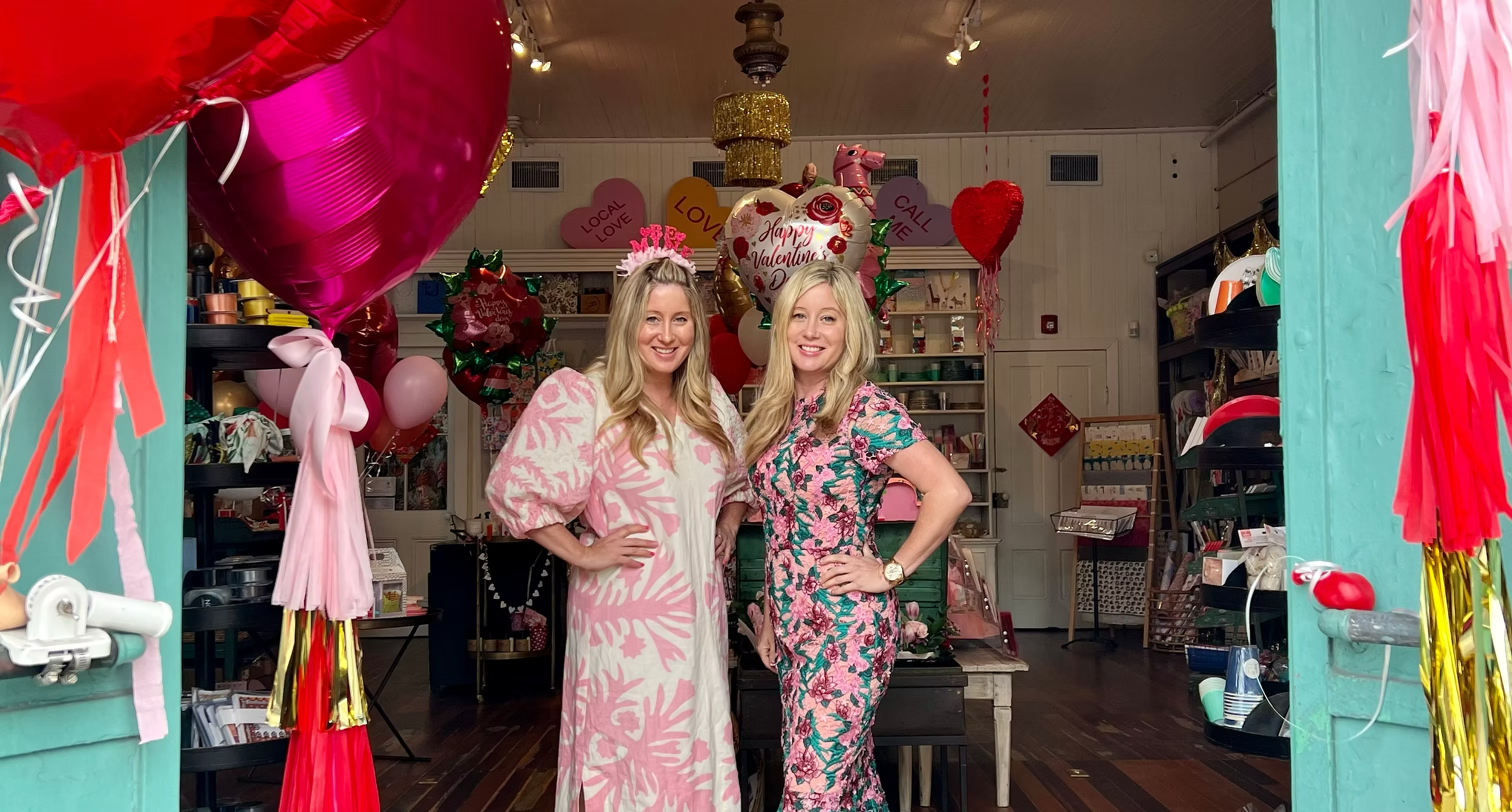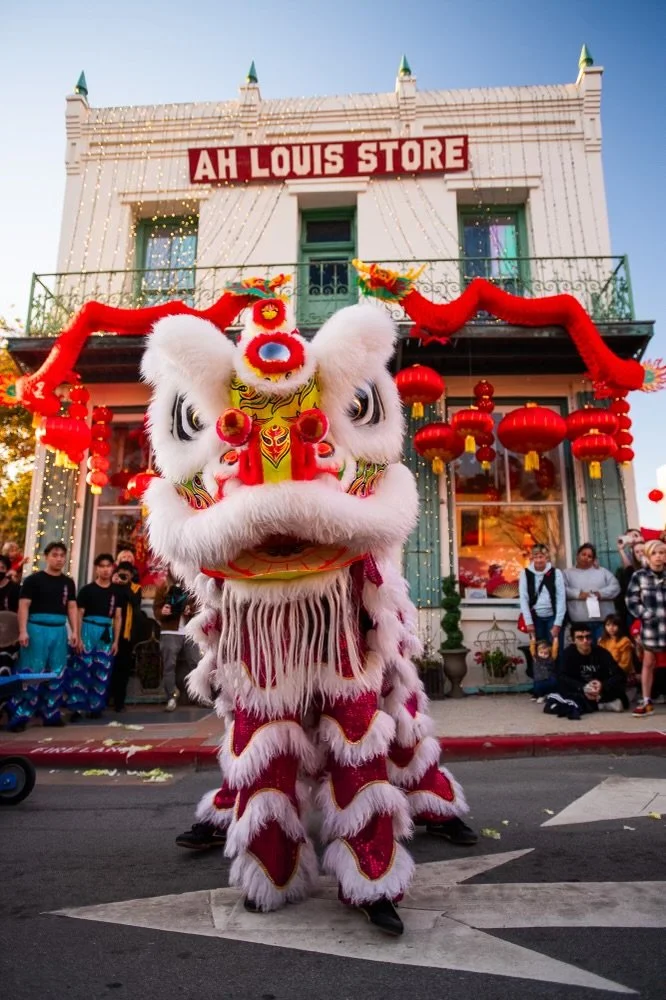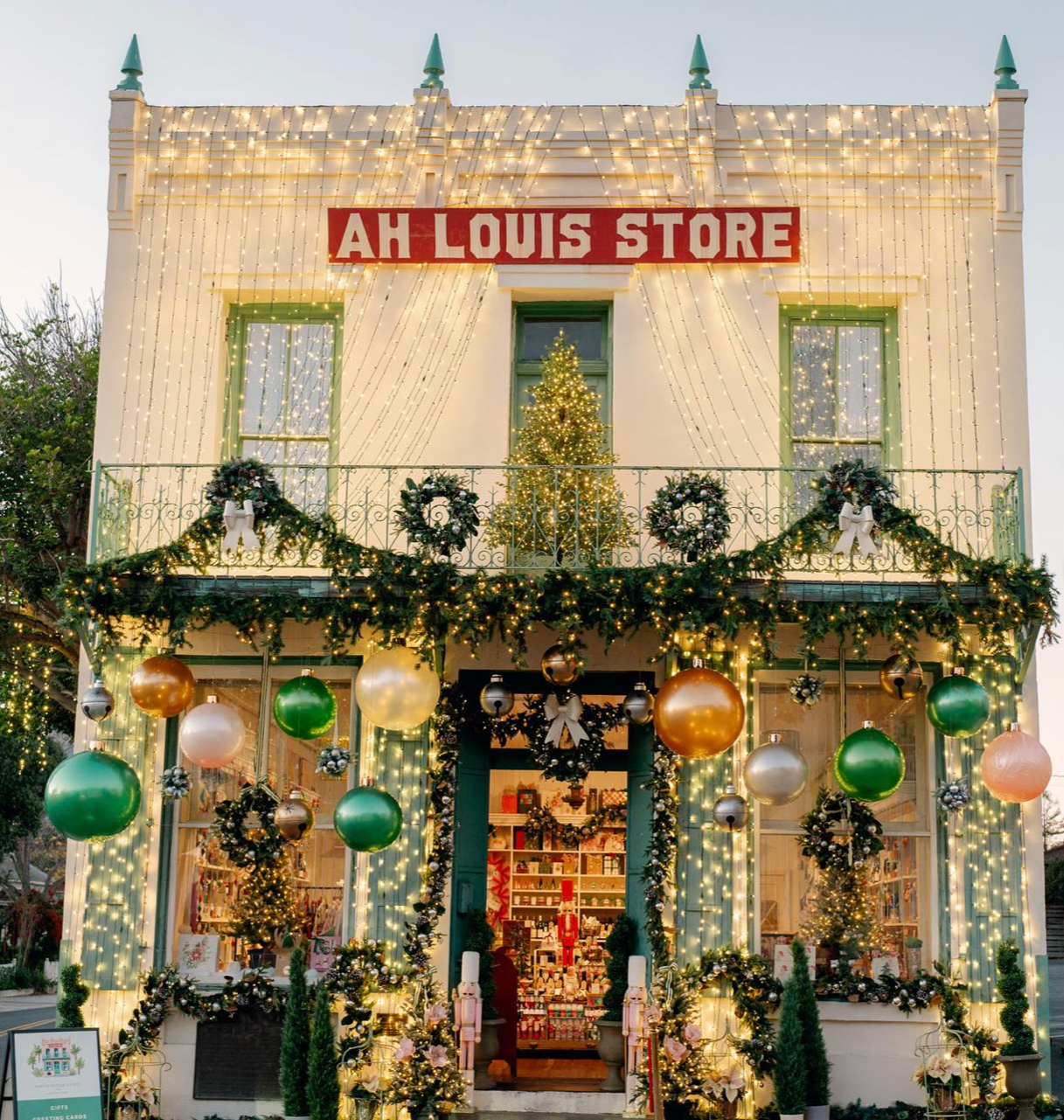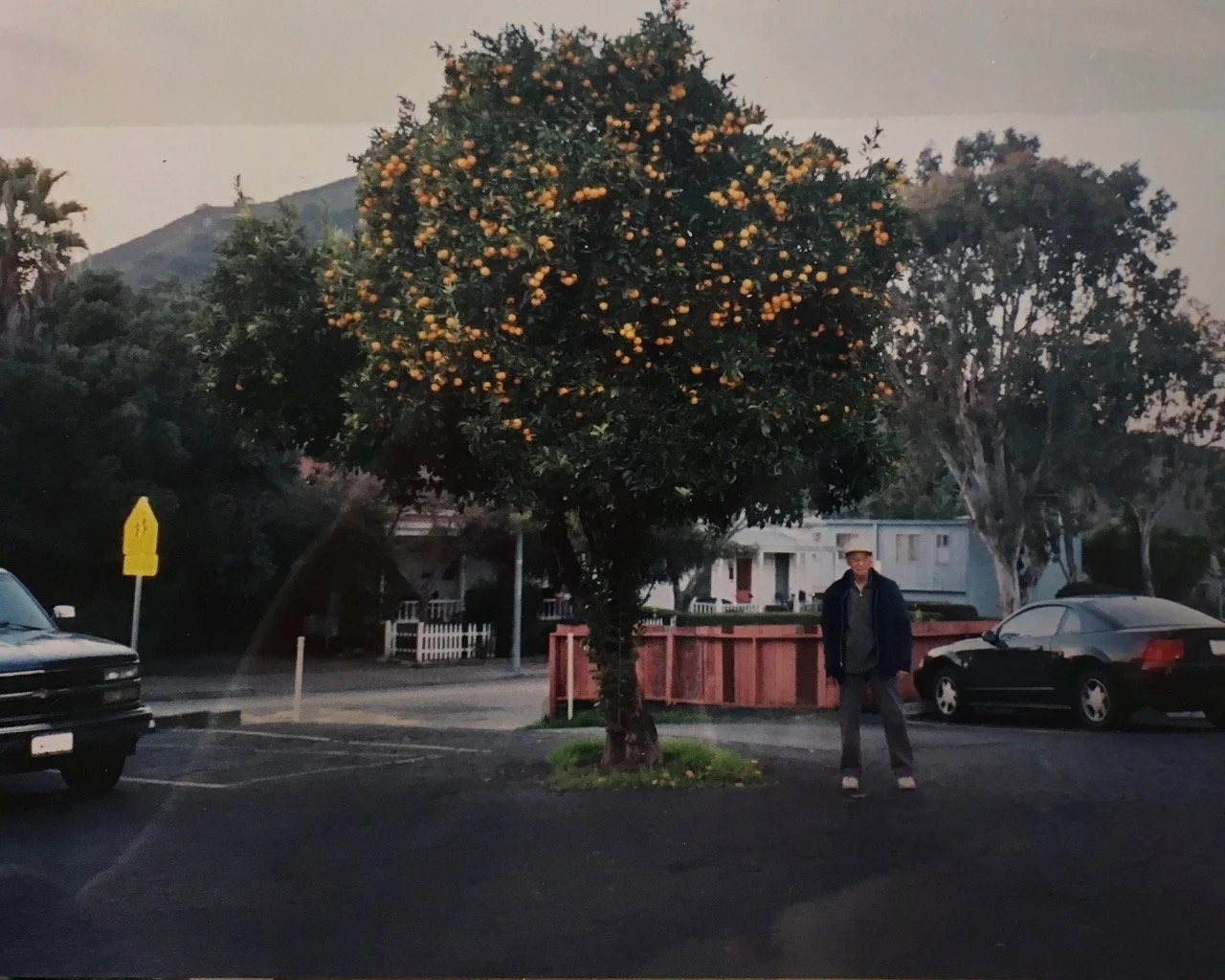Preserving the Legacy of the Ah Louis Store
For the past nine years, under the stewardship of Karson Butler Hospitality Co., the Ah Louis Store has continued to serve the San Luis Obispo community—not merely as a retail shop, but as a thoughtfully preserved window into the city’s rich multicultural past. Blending the charm of a traditional general store with a modern touch, the store honors the entrepreneurial spirit of Ah Louis while remaining committed to keeping his legacy alive for generations to come.
History of the Ah Louis Store
The historic Ah Louis Store was the commercial center of Chinatown, a two block area on the edge of downtown San Luis Obispo, diagonally across the street from the Mission San Luis Obispo de Tolosa. From 1874 to the 1930’s, it served the Chinese and Asian community in San Luis Obispo as its general store, post office, bank, employment office, and gathering place. It was also served as the home of Chinese-American pioneer Ah Louis, or Wong On, and his family of eight children. It was originally built as a wooden structure in 1874. As his business expanded, Ah Louis outgrew it and in 1885, built the larger brick building that exists today on the same site. It is one of the only buildings of the original Chinatown in San Luis Obispo to survive to this day.
Built on the northeast corner of Palm and Chorro Streets, the foundation and walls of the Ah Louis Store are made of brick made from Ah Louis’s own brickworks. Original heavy iron shutters cover the windows and doors and are still functional. One is even scarred by indentations from gunfire from a previous era of the Wild West. After sustaining significant damage from the 2003 San Simeon earthquake, the building was earthquake retrofitted in 2005 while maintaining its original interior except for minimal alterations.
The interior of the building has been lovingly restored. The downstairs store retains the original built-in wooden shelves and cabinetry from the late 19th century made of painted California redwood. They line three of the four walls inside the store and retain most of the drawers, hardware, and pull-out bins located below the shelves where merchandise was stored at one time. The original gas lighting fixture is located in the center of the store. The original safe, cash register, scale, and shop paper roll dispensers have been preserved.
The upstairs is divided into six rooms including three bedrooms, sitting room, kitchen, and bathroom connected by a central hallway. The room layouts are original and the walls and ceilings retain original period wallpaper from the late Victorian Era. The door hardware including hinges and knobs are original throughout the building.
In 1861, 21 year old Wong On left his village near the city of Canton, China, in order to avoid the Taiping Rebellion and to search for gold in America. At first, he prospected in the Washington and Oregon areas and by 1867, arrived in San Luis Obispo attracted by the climate which was favorable for his chronic asthma. He found work as a cook but in 1868, after several years of recognizing him as an enterprising and trustworthy employee, Captain John Harford, the “father” of Port San Luis in Avila Beach, encouraged Ah Louis to become an employment agent to the Chinese laborers, or coolies, as they were called, which were needed in the area. He also gave him the name Ah Louis. Realizing the demand for a labor force in the county, he used his laborers to construct public works projects, work in agriculture in planting and harvesting, serve as household cooks, laundrymen, and handymen, and work in hotels, restaurants, private homes, and hospitals. In 1874, Ah Louis brought in and served as foreman and employment agent for 160 Chinese laborers from San Francisco who arrived by schooner. They helped to build the Pacific Coast Railway, a three-foot narrow gauge railroad. Completed in 1876, the railway ran ten miles from the shipping wharves at Port Harford, to the south end of San Luis Obispo and was the first narrow gauge railroad in Southern California. Ah Louis was paid 10 cents per day for each man and provided them with food and lodging and also served as spokesman for the group. In August of 1881, with the help of Ah Louis’ coolies, the railroad began its extension south to Arroyo Grande and in 1882, extended to Santa Maria and then ultimately reached Los Alamos.
In 1871, Ah Louis established the first brick yard in the area, on the north side of Cerro San Luis Obispo, using time-honored Chinese methods to make them. It inspired local builders to construct many downtown buildings of brick rather than wood. Besides the Ah Louis Store, bricks made by Ah Louis were used to build some of the county’s most historic buildings still standing today including the Andrews block, the Sinsheimer building, a wing of the San Luis Obispo de Tolosa Mission, and a railroad roundhouse. They were also used to build a three-story Courthouse in 1873 and the Hall of Records around this time.
By the mid 1870’s, Ah Louis had become a prosperous businessman who, besides becoming a successful employer and labor organizer, was a merchant and in 1874, built a wooden building on Palm and Chorro Street to serve as a general store and bank as well as the living quarters for he and his family. In 1875, ads began to appear in the Tribune Tribune advertising to sell goods and offering “Chinese labor contracted for on short notice”. He would ultimately construct and own several buildings along Palm Street extending to the end of the block that served as a temple, boarding house, gambling place and community center, which comprised a large part of Chinatown San Luis Obispo at that time. These buildings were ultimately torn down in the mid 20th century and presently a municipal parking garage occupies their sites.
In 1877, Ah Louis began two large county road construction projects including one from Cambria to Paso Robles along which some of the Hwy 46 runs today. The other project was building a stage coach road over Cuesta Grade to Santa Margarita. The latter is still in use today and is presently called “Old Stagecoach Road”.
In 1882, with a contract for $1,100, Ah Louis’ Chinese laborers were used to drain a swamp in a land reclamation and drainage project in today’s Laguna Lake area.
Up until 1892, the Southern Pacific Railroad in Northern California was disconnected and separated from their Southern California railways by a large mountain range, the Santa Lucia Mountains, commonly known as Cuesta Grade, approximately five miles north of San Luis Obispo. In order to connect these two railway systems, between 1892 and 1894, the Southern Pacific Railroad took on the difficult project of digging a series of eight tunnels through the mountains which would finally form a continuous railroad up and down the California coast. Ah Louis served as a labor organizer for this project and by April of 1892, had workers under contract to help in the construction. Finally, on May 4, 1894, the first train arrived with much celebration in the San Luis Obispo train station after traversing the new railway across Cuesta Grade. Five of these tunnels are still being used by the Southern Pacific railroad today.
As his business expanded, Ah Louis outgrew the wooden structure of the Ah Louis Store and in 1885, contracted with Alfred Walker to build the larger brick building on the same site that exists today. It was built in an Italianate style that was contemporary for the period. The Tribune called it, “an ornament to the city, and shows the proprietor to be an enterprising, competent businessman.” It was the first Chinese store in the county, selling general merchandise and food, and serving as a bank, post office, gathering point, and employment office for the Chinese community. He imported and sold Chinese and Japanese merchandise and food including curious and exotic items such as herbs, salted duck eggs, sea cucumbers, dried abalone, peanut oil, and various teas, besides selling sacks of grain, coffee, beans, Levis, and whiskey. Ah Louis was its “unofficial mayor.” He often served as a bridge between the Asian and white communities. The Ah Louis Store was the center of celebration on holidays such as the Chinese New Year. An article on the front page of the Telegram Tribune on February 9, 1900, announces, “Ah Louis Celebrates” and “Chinese New Year Demonstration Attracts a Large Crowd to His Store.” Large fireworks displays were common during these times until 1936, by which time most of the Chinese had left San Luis Obispo County.
His men also worked in agriculture throughout San Luis Obispo County. Towards the end of the 1800’s, Ah Louis contracted laborers to work in the flower fields of the Aggeler-Musser Seed Company. He eventually leased his own farms and pioneered the vegetable and flower seed business in the county on six farms near Oceano, Santa Maria, Pismo Beach, Nipomo and the Edna Valley. The seeds were shipped all over the United State. Much of his farming business was derived from World War I government contracts between 1915 and 1919 of growing crops for the US Army including beans and wheat.
In 1870, a census noted 4,567 white and 59 Chinese living in the county. At its peak, in the early 1890s during the construction of the Southern Pacific Railroad over Cuesta Grade, the estimated Chinese population was 2000, and one in ten San Luis Obispo residents was Chinese. At the turn of the century, estimates are that the Chinese population had dropped back to 700 to 800. By 1930, almost all of the Chinese had left San Luis Obispo for Los Angeles, San Francisco, or to return home to China. Eventually, the buildings of Chinatown slowly disappeared and today, the Ah Louis Store is one of only four buildings still surviving from the original Chinatown, the other three being built in the early 20th century. The Ah Louis Store is one of the earliest surviving land deeds in the County records and is currently one of the oldest buildings in California still owned by the family of the original builder.
Ah Louis passed away December 16, 1936 at the age of 96.
From 1936 to 2004, except for the period of WWII, the store was maintained by Howard Louis, Ah Louis’ youngest son who operated it as a gift store selling imported Asian goods. He passed away in 2008 at the age of 100. In 2004, the store was purchased from Howard by his nephew, William J. Watson, MD, the great-grandson of Ah Louis and the grandson of Mae (Watson) Louis, the sixth child of Ah Louis.












